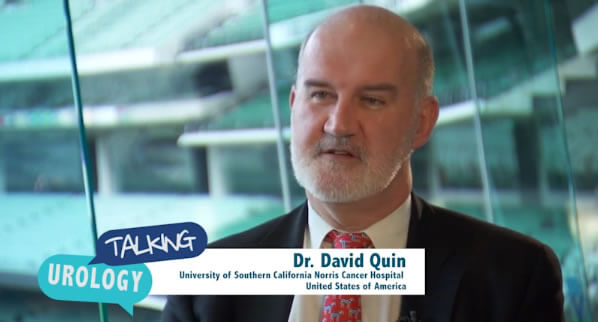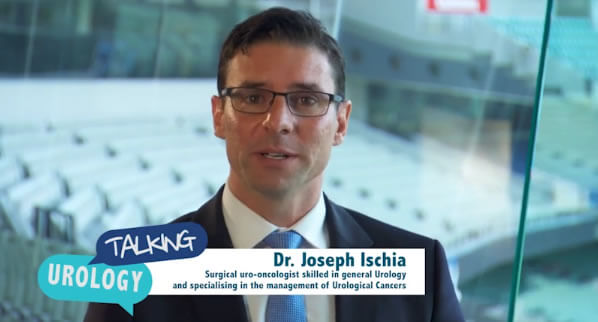ANZUP 2017 – A/Prof Lisa Butler
A/Prof Lisa Butler discusses her research on identifying drug response biomarkers in prostate cancer.
Talking Urology podcast transcript
ANZUP 2017 Interviews - Ian Vela and Lisa Butler
Ian Vela: My name is Ian Vela, I’m here at the ANZUP annual scientific meeting with Lisa Butler who is a PhD research scientist now at the South Australian Health and Medical Research Institute. Lisa gave a fantastic talk to this morning in our Translational Research Symposium identification of drug response biomarkers in patient-derived prostate explants. Thanks for joining us Lisa.
Lisa Butler: Hi Ian, pleasure.
Ian: Your talk was very exciting. This new model system that you have shows real promise given that prostate cancers, as I’m sure you’re aware now and listeners, are aware of being very difficult to model in an in vitro setting. Can you explain a little bit about your model system?
Lisa: Sure, yes. I think there’s been many times over the years to try and make better models of prostate cancer but it’s been really really hard especially to have models that are really close to the human disease. We know that as soon as we take it out of the body, it changes and it really responds quite poory to culture in many ways. It doesn’t grow the way it normally would. It doesn’t respond to hormones the way it normally would and then it becomes not a very good model system, so what we do is a little bit different. We just try and manipulate that tissue as little as possible. We just chop it up into pieces, pop into some little sponges in our lab as a bit of a scaffold and then we grow it for only very short periods of time, so that it’s not changing and adapting too much in culture, so that we can do some short-term endpoints points to look for how a drug might respond in that patient.
Ian: And so, the aim of this new system is to identify potential new drug treatments?
Lisa: Yes. In fact, we’re very interested in looking at new drivers of cancer because again most of those have been identified mainly in traditional lab models. And so, we’re looking for new drivers of disease that are targets of androgens for example, the drivers of prostate cancer, but also we’re interested in biomarkers trying to figure out who are the best patients to treat with an appropriate new therapy for example, because as you know well that we really can’t treat everyone with prostate cancer the same these days. There’s still very limited in molecular stratification of disease, so this is a way that we can try and identify some biomarkers that are going to be clinically relevant in a real tumor, not just in tumor cells grown in a dish.
Ian: Just to clarify for my benefit you are taking primary prostate cancer from a radical prostatectomy specimen. Have you ever done any work with metastatic samples like lymph nodes or bone metastases or anything like that?
Lisa: We’ve done a little bit. We’ve done some locally recurrent disease after androgen deprivation therapy from TURP specimens, those explant extremely well. We’ve had a lot more mixed success with taking advanced bone metastases for example or soft tissue which is unfortunate because it would be great to look at that disease context in a little bit more detail. But I think until we have some better approaches to do that, we’re always going to struggle in that advanced space.
Ian: Using the primary prostate cancer as the model, how translatable do you think that if we are looking for drugs for an advanced disease setting where the prostate cancer spread, do you think it’s going to be translatable to the whole patient scenario versus what’s happening in a primary prostate cancer?
Lisa: Yes, we do. I think again that’s an area where we need to broaden our thinking a little bit rather than just simply trying to deal with the horse once it’s bolted by only looking in the CRPC space. We need to think about how that space actually emerged. All of those tumors started as localized disease and we know that castrate-resistant disease emerges as an adaptation to that low-androgen environment. Really, by looking at localized disease, we’re looking at the development of resistance as well because that’s the place I think where we’re going to have the most chance to intervene and prevent castrate-resistant disease from forming. I think it’s still going to be very hard for a long time to durably control that end stage of disease.
Ian: Finally, I’m sure a lot of the clinicians and also patients who might be listening to this podcast would be very keen to hear, do you think this will be something that we can routinely potentially perform on individual patients to try and identify what may or may not work in a particular individual cancer for a real sort of precision personalized medicine approach? Do you think that would be a potential for this sort of model?
Lisa: I think down the track it will be potential for that particularly because, as I mentioned before, the attention even clinically is focusing more and more early in disease now, so we’ve realized now that patients have better outcomes if they have a high-risk tumor that if they have treatment right after surgery with various systemic treatments. And so, again those patients are very difficult to figure out who’s the best to treat who’s going to respond and even whether they have responded. In fact, as you well know, we’d be waiting many years down the track to see whether that patient ever responded or not. That’s where I see a real possibility for individualization of therapy. Doing explanting of high-risk tumors as they are coming out to test which sort of therapies or combinations might be most effective for that individual patient in an adjuvant setting.
Ian: Well, fantastic. Thanks very much for taking the time to talk to us Lisa and congratulations on your world-leading Australian first research. Congratulations.
Lisa: It’s very kind of you. Thank you.












